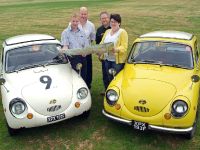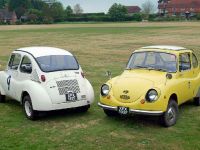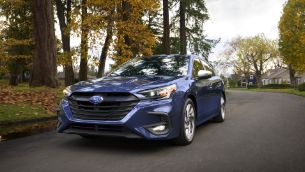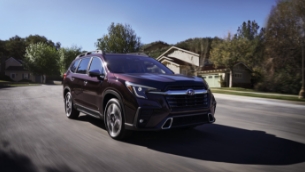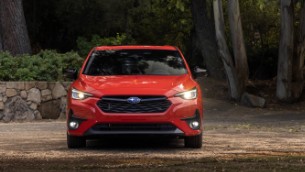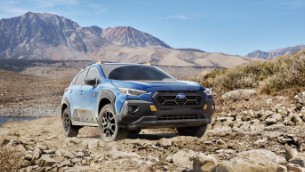Uk team to put original subaru to ultimate test
Four UK Subaru fans are to put the manufacturer's original model, the 360cc microcar, to the ultimate test - a 2,000-mile rally through some of Europe's toughest terrain including Italy's Stelvio and Gavia Passes.
And not only does the ‘Liege-Brescia-Liege' rally commemorate the 50th anniversary of the original but also the 50th anniversary of the launch of Subaru of Japan's first passenger car.
It is the world's only International rally for sub-500cc cars and has attracted over 75 entrants, some of whom will successfully travel through Belgium, Germany, Austria, Italy and Slovenia. The others – like the original 1958 entrants – will perish on the way.
However, unlike 50 years ago, the July 11-20 event will cover 10 days instead of the non-stop three of the original, traffic congestion and posterior protection being to blame.
The UK's fearless Subaru foursome are classic car restorer and seasoned historic rally driver, James Ewing and his Designer partner Jane Puttock from Haslemere, Surrey.
The drivers of the second Subaru 360 are Managing Director, Victor Sayer from Finchampstead near Reading and Craig Lawson from Farnborough, Hampshire who is in the motor trade.
Their cars are from the 1967 and 1968 model years and are powered by two-cylinder, air-cooled two-stroke engines mounted in the rear and producing a dizzying 20 PS each – less than some single-seater petrol lawnmowers.
The newer car has a four-speed gearbox and the older a three-speed – both without synchromesh on first gear. Cruising speed is about 50 mph – on the flat, of course.
"No, we are not mad as these cars are remarkably spacious and such fun to drive," said Victor.
"They are real conversation pieces which is part of the enjoyment. Everyone wants to know what they are and only a few get it right."
And Craig added: "It only becomes slightly annoying when spectators guess it's a Fiat 500. That car in faster Abarth form won the original 1958 rally and there is a factory team entered for this one so the Fiat is our key competitor."
However, because the Subaru team's cars are a little newer, they are entered in the ‘Spirit 400 Class' and cannot claim the ultimate ‘Authentic Under 500' category. But apart from winning their class, they are also hoping Jane may drive away with the ‘Ladies Prize'.
But surely they would be happy just to simply complete the 2,000 miles without a terminal breakdown?
James said: "Without wishing to tempt fate, I am supremely confident. Not only have I carried out all the restoration myself but know these Subarus are very reliable with no weaknesses like half-shafts, for example. Also, they are easily fixable by the roadside."
Modifications are minor but include radial tyres, uprated shock-absorbers and overhauled brakes. Penalties are given for repairs en-route which the team think may help them claw back some points from better-resourced factory team entries.
Rally conditions include the taking of detailed location photographs to prove they have followed the route. Other challenges include complex map-reading and – of course – keeping cool and comfortable in the cramped confines of a microcar.
Finally, compact car connoisseur, Jane, said: "I suppose you can blame me for all of this. You see, I saw a picture of a Subaru 360 in a Dutch magazine a few years ago and said to James I would love one of those.
"He managed to locate and import one from Japan with a second as spares. However, when we opened the container, both were better than expected and, with a little work, we were soon buzzing around in them and having great fun such as taking part in the ‘Goodwood Revival'.
Other cars in this year's ‘Liege-Brescia-Liege' rally include Italy's Fiat 500, France's Citroën 2CV, Germany's Messerschmitt, Heinkel and BMW Isetta Bubble Cars and Britain's Bond and Berkley Minicars.
Editor's Note: Subaru's 360 microcar was never officially exported into Europe but did, perversely, find its way into the United States where some spare parts can still be found.
Launched in 1958, the Subaru 360 enjoyed a 12-year production run and sold around ¼ million units. It also showcased the first application of the now famous ‘Pleiades' six-star emblem mounted on its bonnet. Updated, the badge is still used today.
